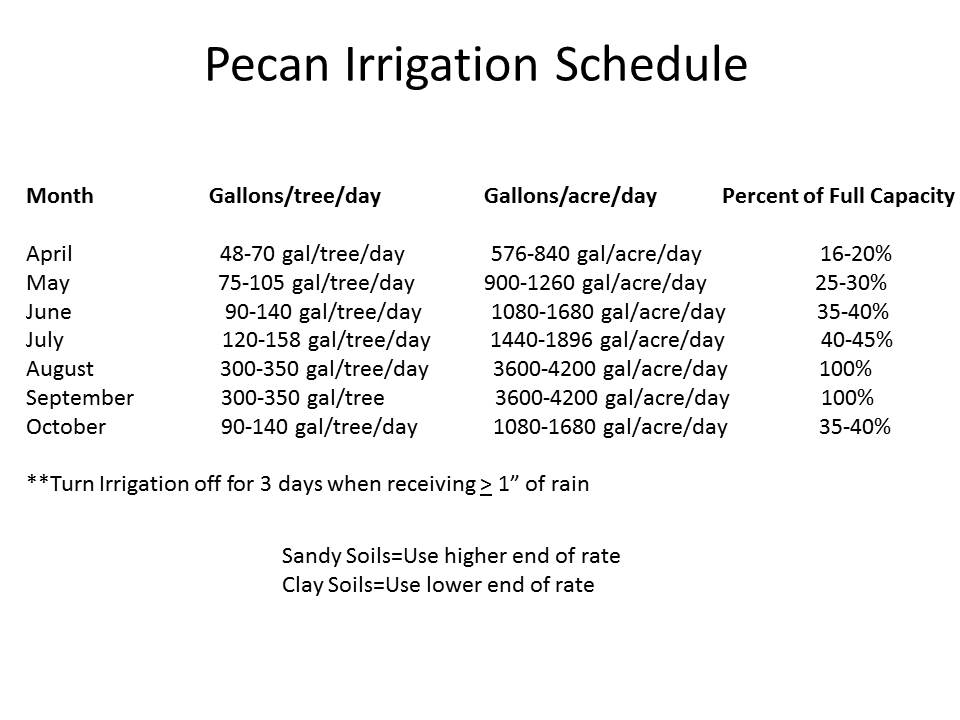
By Clint Thompson
Many elements factor into a successful pecan production season. What were the weather conditions like? Was scab disease a problem? One of the most important factors is irrigation and keeping the trees watered especially during prolonged dry periods and nearing harvest.
University of Georgia Extension pecan specialist Lenny Wells stressed the importance of keeping trees irrigated during the summer months and leading into harvest season this fall.
“As we see now with almost anything that you grow, irrigation is a necessity. We really don’t even try to encourage anybody to grow pecans without irrigation. When they put that irrigation in, they’ve spent the money for that, it’s an expensive input and they need to manage it wisely and use it as it needs to be done,” Wells said. “Trees need water season long from April all the way through October. They need different amounts at different times of the season.”
Reduced Rates in June, July
It’s also important to know the different water amounts that need to be applied at various stages of development. UGA recommends that growers apply 33% and 40% of full capacity in June and July respectively or between 1,188 and 1,320 gallons per acre per day in June and between 1,440 and 1,600 gallons in July. Those recommendations increase to 100% in August and September or between 3,600 and 4,000 gallons.
“You need to manage your irrigation in order to manage your quality. Basically, if you over-water in June and July, you’re going to create pecans that are really large. Then as the water demand continues to go up in August and September when they’re filling those kernels, the larger you make that nut, the harder it is to fill,” Wells said. “With the irrigation schedule we have in place, you’ll get those nuts to the size they need to be, and you’ll be able to fill those nuts.”









